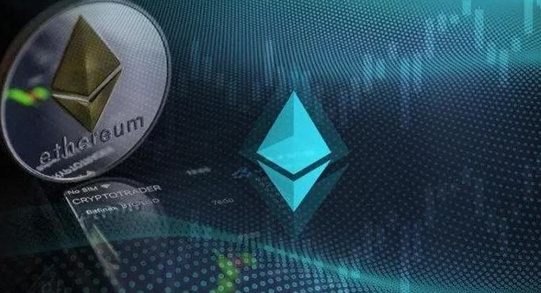What is Ethereum?
Nov 19, 2024
What is the Ethernet network?
Ethereum (ETH) is an open source platform that supports smart contracts, and handles peer-to-peer contracts by providing a decentralized virtual machine (EVM).
Just talking about the definition may be somewhat abstract. For example, it will be simple and clear: we can compare Ethereum to WeChat, and developing applications such as DeFi and DApp on Ethereum is equivalent to developing various small programs on WeChat; It's just that the Ethereum network is open source, and project parties or developers all over the world can independently create their own small programs on this platform, that is, use the contract code on Ethereum to build decentralized application projects.

Vitalik Buterin, the founder of Ethereum, is a post-90s programming genius, and the industry calls him "V God". The inspiration of V God for the concept of Ethereum comes from Bitcoin, but it has different goals from Bitcoin. Bitcoin was originally created as a substitute for legal tender, and it is eager to become a medium of exchange and a store of value. The purpose of Ethereum is to build a platform to run various programs and applications, so there are great differences in value, function and use.
What is ETH and what is the price trend of ETH?
Ethereum has built a decentralized platform with practical application. The governance token and payment medium of this platform are also called Ethereum (English name Ether, abbreviated as ETH), but some people in the market will call it Ethereum to distinguish it. The main function of ETH is not only to transfer money and pay, but also the core fuel for building applications on the Ethereum.
It can be understood that in this land of Ethereum, Ethereum provides users with various building block models (smart contracts), and users can use these building block models to build their own buildings (project applications), and the land fees, calculation fees and storage fees required for building houses on this land need to be paid by ETH.
ETH originated on July 24th, 2014, and the crowdfunding price was $0.308. Seven years later, Ethereum recently hit a historical high of $4,369 (May 12th, 2021), with the highest increase of 14,184 times. At present, the total market value of ETH is about $450 billion, which is the second largest digital asset after Bitcoin.
The Relationship between Defi and Ethereum
DeFi's English full name is Decentralized Finance, and its Chinese literal translation is "decentralized finance". The vigorous development of DeFi is intended to build a kind of decentralized financial service project based on blockchain technology. At present, the total number of DeFi locks on the Ethereum network has reached 45.484 billion US dollars.
How to understand decentralized finance? As the name implies, the target of decentralized finance is centralized finance in our reality. For example, we need to perform these operations through banks or a third-party platform to deposit and borrow. The operation of centralized finance often has problems such as long audit period and opaque process, and occasionally there are risks such as data fraud/loss.
Decentralized finance does not require the intervention of any third-party financial institution, and the operation process is executed by program code. As long as the conditions stipulated in the smart contract are met, the transaction between the two parties can be completed automatically. The whole process is transparent and efficient, which greatly reduces the credit cost.
Nowadays, the application of DeFi in Ethereum includes many fields, such as lending, asset management, derivatives, DEX (decentralized exchange), stable currency, etc. The vigorous development of DeFi has made more and more users and transactions on the public chain of Ethereum. While promoting the ecological development of Ethereum, it has also caused the disadvantages of slow transfer, network congestion and high handling fees in the whole network.
What is Ethereum 2.0?
In order to alleviate the problems of Ethereum network, Ethereum team proposed to upgrade this network, that is, Ethereum 2.0 (or ETH 2.0), to improve the speed and efficiency of the network and reduce the handling fee. Compared with ETH 1.0 before upgrading, ETH2.0 adopts POS (Proof of Rights) mechanism, fragmentation technology and eWASM virtual machine.
POS mechanism, as well as the design of beacon chain and fragment, can greatly improve the performance and scalability of Ethereum 2.0. For example, in the past, all vehicles were driving on a one-lane highway, and there was only one toll booth, which was slow and expensive. After upgrading to version 2.0, the single lane has expanded into a highway with dozens of lanes, and the traffic speed of vehicles will naturally accelerate and the cost will be greatly reduced.
The operation of the network is inseparable from the maintenance of nodes. As long as a certain number of ETH (at least 32 pieces) is pledged to the contract address of Ethereum 2.0, it can become a node and win the pledge income. As of mid-May, there are more than 4.42 million ETH in the contract address of Ethereum 2.0, with an annual interest rate of about 7.5%.
Recommend Apps









